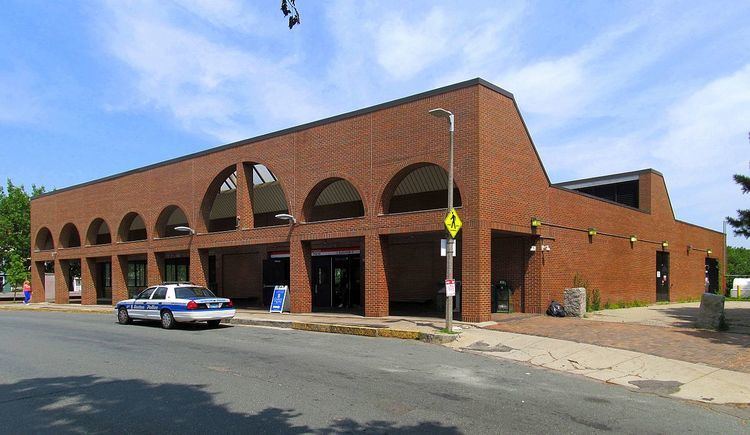Line(s) Orange Line Disabled access Yes Platforms in use 1 | Bicycle facilities 12 spaces Opened 4 May 1987 Tracks 2 | |
 | ||
Location 100 Boylston Street at 180 Lamartine Street
Jamaica Plain, Massachusetts Owned by Massachusetts Bay Transportation Authority Passengers (2013) 3,652 (weekday average boardings) Address Boston, MA 02130, United States Owner Massachusetts Bay Transportation Authority Similar Jackson Square, Green Street, Forest Hills, Ruggles, Oak Grove | ||
Stony Brook is a rapid transit station on the MBTA Orange Line, located below grade at Boylston Street in the Jamaica Plain neighborhood of Boston, Massachusetts. The station was opened on May 4, 1987 as part of the Southwest Corridor project, replacing an earlier station that was open from 1897 to 1940. After nearby Green Street, it is the second-least-busy station on the Orange Line, with 3,652 daily boardings by a 2013 count.
History
Starting in 1891, the Old Colony Railroad (acquired in 1893 by the New York, New Haven and Hartford Railroad) raised the section of its main line through Jamaica Plain (extending from Massachusetts Avenue to the current location of Forest Hills station) onto a 4-track stone embankment to eliminate dangerous grade crossings. The project involved the replacement of the three NYNH&H stations in Roxbury and Jamaica Plain (at Roxbury Crossing, Jamaica Plain, and Forest Hills) with elevated stations, and the construction of two new stations at Heath Street and Boylston Street. Boylston Street station opened on June 1, 1897, along with the other four new and rebuilt stations.
On November 22, 1909, the Washington Street Elevated was extended south from Dudley Street Terminal to Forest Hills. Although the five NYNH&H stations in Roxbury and Jamaica Plain continued to operate for over three decades following the southward extension of the Washington Street Elevated, they were ultimately unable to compete with the Elevated, and all, including Boylston Street, were closed on September 29, 1940 due to a lack of passengers.
In the 1960s, plans took hold to extend I-95 into downtown Boston along the NYNH&H's right-of-way and to replace the Washington Street Elevated (after 1967 known as the Orange Line) with a rapid transit line running in the new highway's median. Although the project was halted by highway revolts in 1969 and the February 11, 1970 announcement by Governor Francis W. Sargent of a moratorium on new highway construction within the Route 128 corridor, and eventually cancelled by Governor Sargent in 1972, the right-of-way had already been cleared. This empty strip of land (known as the Southwest Corridor) was eventually developed into the Southwest Corridor Park, and the Orange Line was moved to a new alignment along the Corridor in 1987 despite the cancellation of the project originally calling for its relocation. This included a new rapid transit station at Boylston Street, on the site of the former NYNH&H station, named Stony Brook after the former watercourse of the same name. The Washington Street Elevated was permanently closed on April 30, 1987, and the new southern half of the Orange Line including Stony Brook opened on May 4.
Since the route 48 bus was discontinued on July 1, 2012, Stony Brook has no bus connections. Jackson Square, the next stop to the north, is a major bus transfer station.
